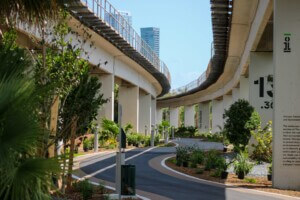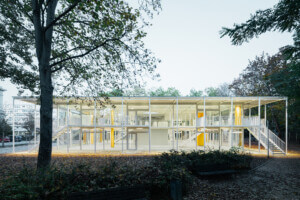The controversial train station project in Germany, Stuttgart 21, has finally completed the construction of its columns. Ingenhoven associates’ Christoph Ingenhoven and the late Frei Otto, who won the 2015 Pritzker Prize for pioneering the use of lightweight structures, submitted to a design competition for the station in 1997 and won. In addition to replacing the pre-existing station with a residential district, the plan involves creating four new stations that locate Stuttgart on a Paris-to-Budapest rail link and provide better airport transfers, 16 tunnels, and 44 bridges at a cost of $9.75 billion. Since the project’s early days it has spurred geopolitical backlash, including a demonstration in which one protestor permanently lost sight in one eye.
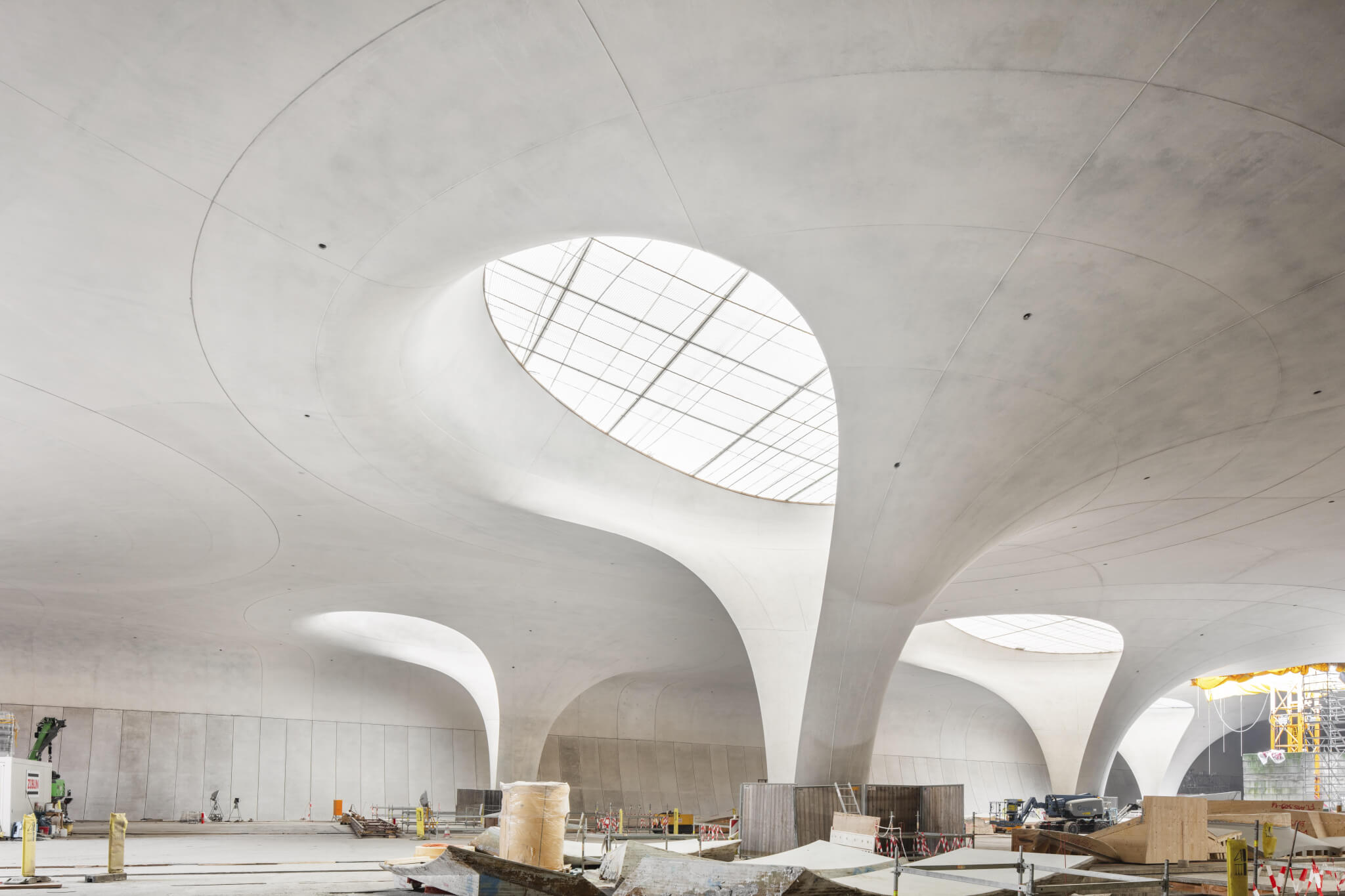
Both technically and visually dynamic, the plan was challenging from the onset. It has to connect high-speed links from Stuttgart to other cities, local infrastructure and the replaced parts of the existing aboveground station, Stuttgart Hauptbahnhof, with eight belowground tracks that cross at 90 degrees. While Otto left the project in 2009, Stuttgart-based Werner Sobek took charge of the engineering, having researched on minimal structures. The station—a joint project by the German federal government, the state of Baden-Württemberg, the state capital of Stuttgart, the Verband Region Stuttgart, Flughafen Stuttgart GmbH, and building contractor Deutsche Bahn—began construction in 2010, however, residents of Stuttgart began protesting well before that.
Many protested that the plan was too expensive, required years-long construction, was not environmentally friendly (indeed, each column of the station requires 750 tons of carbon-intensive concrete alone), and required partial demolition of Stuttgart Hauptbahnh, a protected monument. Tensions increased when former Lord Mayor of Stuttgart, Wolfgang Schuster, reneged on his 2004 promise to the residents that they could vote on the fate of Stuttgart 21 if the project budget exceeded 200 million euros. In response, citizens petitioned and protested, backed by the green political party in Germany. In 2009, protests were weekly occurrences, continuing on to September 30, 2010 when the largest demonstration occurred and clashed against the police force’s pepper spray and batons. (It’s this violence that caused a protestor to lose eyesight.) Despite this, a referendum in 2011 continued in favor of the station’s construction.
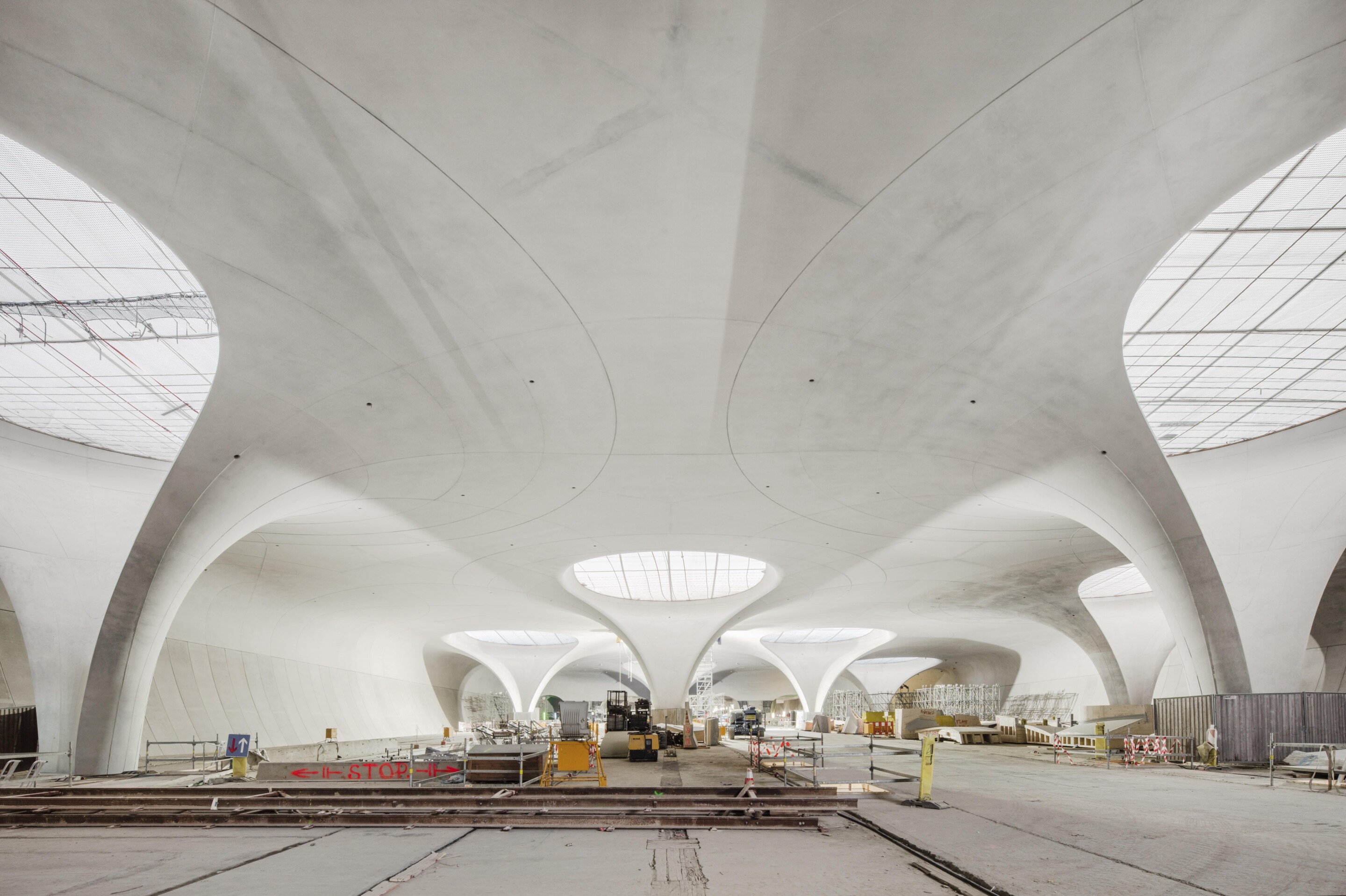
Fast forward to 2021 when the project celebrated its construction halfway point which includes its main station. The design is centered around 28 chalice-like concrete columns, which are informed by experiments with tensile structures and digital models. The sloping and scooping supports (which open into circular skylights) are as structurally impressive as they are aesthetic. Each column is reinforced with 22,000 rebars, made in a special facility and shipped to the site where they are configured. Then, their positions are controlled with laser projections and wrapped in wood formwork. More than 80 large-format formwork elements are needed for a single chalice, finished by a coat of bespoke resin. Each chalice requires three months of construction time, 750 tons of concrete, and 350 tons of steel reinforcement.
The chalices support the mathematically free-form shell roof, a concrete complex structure of synclastic and anticlastic curved surfaces that stretch around 1,476 feet (450 meters) long and 262 feet (80 meters) wide. They are also integral to the station’s energy efficient design that does not rely on electricity for ventilation, heating, and basic lighting. Skylights, as well as the white walls which reflect the train, help reduce the need for artificial light. Meanwhile a reduction of glass openings and the tunnel airflow helps maintain comfortable conditions of 50 to 77 degrees Fahrenheit year round. The roof is finished with solar panels to help support any additional energy needs.
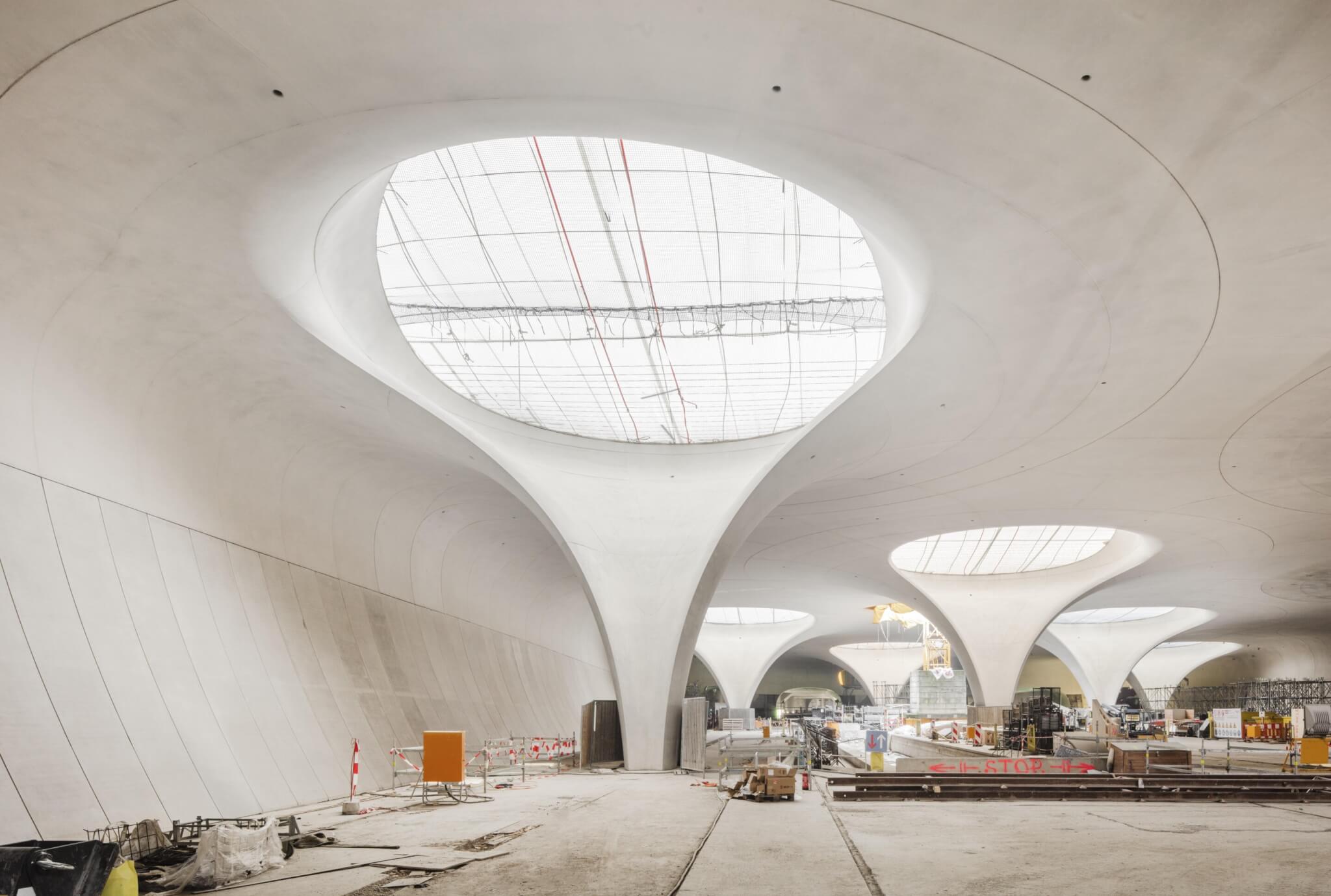
In June, the last and final chalice was cast in concrete. Next, construction will tackle the closing of the skylights. This milestone puts Stuttgart 21 back on track for completion in 2025. That is, of course, if there are no further protests.









